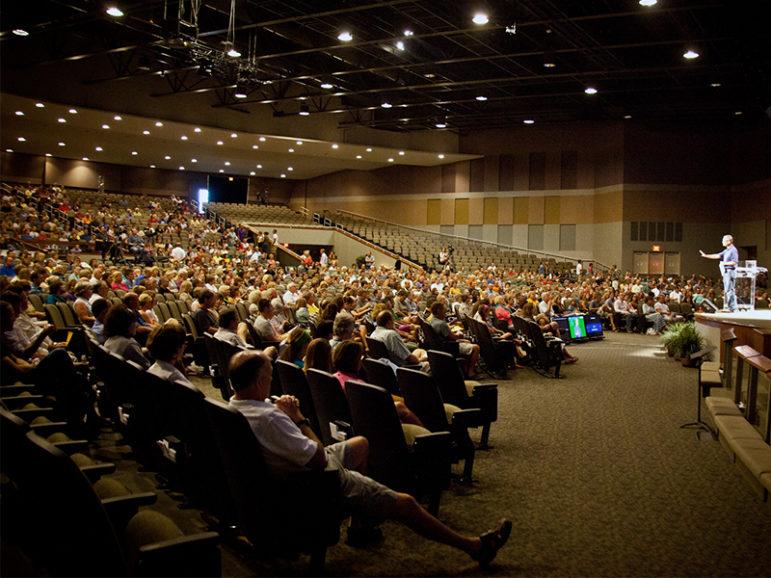
Senior Pastor Adam Hamilton addresses the congregation during the United Methodist Church of the Resurrection on July 15, 2012 in Leawood, Kansas. RNS photo by Sally Morrow
(RNS) Over the past two decades, the biggest story in religious voting patterns has been the emergence of the so-called God gap — the tendency of religious voters regardless of affiliation to prefer Republicans and of less religious ones to prefer Democrats.
This is usually measured by way of voters who tell exit pollsters they attend worship services at least once a week. Since the 2000 election, they have consistently preferred Republican to Democratic presidential and congressional candidates by 60 percent to 40 percent (give or take) — a margin roughly twice as large as the better-known gender gap (measured as women’s preference for voting Democratic).
But it looks like the God gap is going shrink sharply this year … in the presidential contest.
Here’s what’s happened over the past couple of months according to the two most recent GWBattleground polls — one taken August 28-September 1 showing Hillary Clinton leading Donald Trump by two points, the other taken October 8-13 showing her up by eight.
As of early September, the God and gender gaps were essentially mirror images of each other when it came to presidential and generic congressional support:
Women preferred Clinton and congressional Democratic candidates by margins of 11 and 13 points respectively. Weekly attenders preferred Trump and congressional Republicans by 11 and 12 points respectively.
But by the middle of October, the weekly attenders had split their preferences, dropping their margin of support for Trump over Clinton from 11 to seven points even as they increased it for congressional Republicans from 12 to 17 points.
By contrast, women’s support for Clinton increased along with their support for congressional Democrats, from margins of 11 and 13 points respectively to 18 in both cases.
It seems clear that among the women whose support for Trump has evaporated are a significant number of religious women, who make up a disproportionate share of weekly attenders. Yet even as the latter have turned away from the Republican presidential candidate, they have doubled down on a Republican Congress.
READ: Will evangelical women turn the tide against Trump?
What we’re facing this year then, is a bifurcated God gap — a congressional one approximating the God gaps of recent elections and a presidential one just one-third the size.
Republican presidential wannabes may conclude from this that they can look forward to a return to the presidential God gaps of yesteryear.
But by the same token, the size of this year’s gender gaps would seem to bode ill for Republican candidates for office on both ends of Pennsylvania Avenue.





